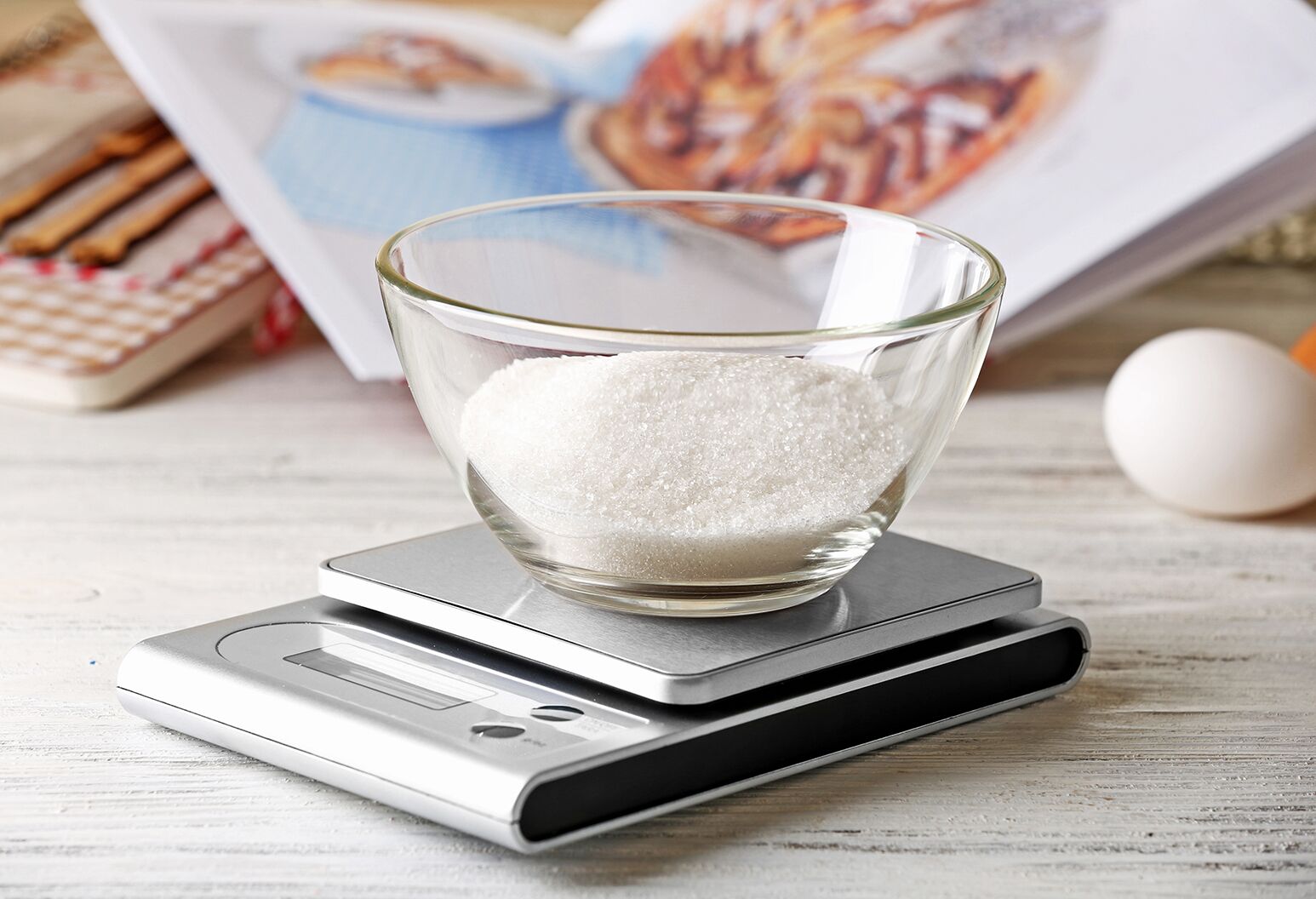healthy living/fitness
Balsamic Chicken And Jicama Slaw: A Perfect Match

A registered dietitian shares how she keeps her sugar intake in check.
4 min read
For those trying to maintain a healthy diet, the concept of the sugar budget is key. What is it? Essentially, it’s like a financial budget, but instead of counting money, you’re working with grams of added sugar—and that budget is only about 25 grams of added sugar per day (natural sugars found in fruits and veggies aren’t included).
Sounds daunting, I know, but even subtle changes can keep cravings in check, your energy high, and your long-term health in balance. Let me walk you through my day on a sugar budget.
The most common mistake I see with my clients is blowing half their sugar budget before 9am. Let’s say you start your morning with a flavored latte (22 grams of sugar) and a “healthy” granola bar (12 grams). That’s 34 grams before you’ve even logged on for work. And that means an inevitable sugar crash by 10am.
What I do: Instead, start with a balanced breakfast. I opt for a cup of black coffee or unsweetened tea paired with avocado toast on whole-grain bread topped with an egg or two. The fiber from the bread and fat from the avocado keep me satisfied, while the protein in the egg stabilizes my blood sugar.
Sugar spend: 5 grams
By 10:30am., the emails are flying, and you’re reaching for a quick snack. Maybe you grab a fruit-on-the-bottom yogurt—seemingly innocent, but it’s packing 17 grams of added sugar. Cue the mid-morning slump, and you’re now riding the infamous blood sugar rollercoaster: spikes, crashes, and that nagging feeling of, “Why can’t I stop snacking?”
What I do: I grab an unsweetened Greek yogurt and top it with a handful of fresh berries. You get all the tang, none of the crash, and your sugar budget stays intact.
Sugar spend: 0 grams
Fast forward to lunchtime, and you might throw together a quick salad. Greens, grilled chicken, roasted veggies, and … bottled vinaigrette? That’s where things can get tricky. Many store-bought dressings contain 6 to 10 grams of added sugar per serving.
What I do: I whisk up my go-to dressing: olive oil, lemon juice, and a dash of Dijon mustard. It’s tangy, fresh, and totally sugar-free.
Sugar spend: 0 grams
This is the moment when trouble strikes. It’s 3pm, and the vending machine’s siren song is calling. A soda seems like a quick pick-me-up, but at 39 grams of sugar per can, that’s nearly double your daily budget.
What I do: I crack open a sparkling water and add a squeeze of lime. If I need a snack, I reach for a piece of fruit like an apple, paired with a handful of almonds. The natural sugar in the apple is wrapped in fiber, slowing its absorption and keeping me full.
Sugar spend: 0 grams
Dinner is when I see a lot of sugar sneaking in. Store-bought marinara sauce can pack 8 to 10 grams of sugar per half-cup serving. Add in a glass of wine (3 grams) or a sweetened iced tea (20 grams), and suddenly, your sugar budget is in the red.
What I do: I keep my dinner balanced: roasted salmon, a side of quinoa, and a pile of sautéed greens. For a drink, it’s water or herbal tea. If I’m craving something sweet, I save space in my sugar budget for a square or two of dark chocolate.
Sugar spend: 4 to 8 grams
By the end of the day, I’ve stayed under 25 grams of added sugar—and it shows. No sugar crashes. No afternoon brain fog. And most importantly, I feel good. Clients tell me that after making these changes, they notice the benefits in as little as a week: fewer cravings, clearer skin, better sleep, and even weight loss.
The key to success is reading labels carefully, at least until you get a hang of where added sugar can be found. In fact, added sugars can hide in unexpected places, from bread to condiments, so look for the term on the nutrition info. You’ll also want to choose whole, unprocessed foods when possible, and prioritize protein and fiber, two macronutrients that stabilize your blood sugar and keep cravings at bay.
Remember, the sugar budget isn’t a rigid rule—it’s a flexible framework. You don’t need to deprive yourself or cut out sugar entirely, just make mindful choices throughout the day and decide when that added sugar is worth it. Use your sugar budget on the treats that truly bring you joy—like a favorite dessert—rather than hidden sugars in packaged snacks. For many, a small bowl of real ice cream is sugar “dollars” well spent.
The Well is Northwell Health’s commitment to the future of health care. In this time of information overabundance, much of which is inaccurate, unhelpful, or even difficult to understand, Northwell Health is on a mission to make a difference as an honest, trusted, and caring partner. The site connects with consumers to provide them with personalized content that reduces their stress, makes them laugh, and ultimately feel more confident and capable on their healthcare journey.